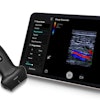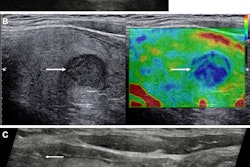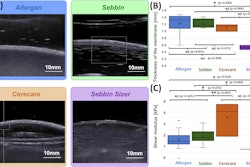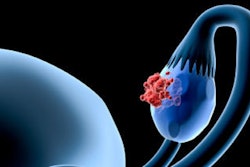Shear-wave elastography shows tissue stiffness in athletes with low-back pain, according to research published November 22 in the Archives of Physical Medicine and Rehabilitation.
A team led by Siu Ngor Fu, PhD, from the Hong Kong Polytechnic University found higher deep lumbar multifidus (DLM) stiffness in athletes with low-back pain and higher superficial lumbar multifidus (SLM) stiffness in athletes involved in sports with greater demands on back extension.
“Rehabilitation for chronic low-back pain may focus on reducing DLM stiffness with specific interventions, and sport-specific conditioning programs should address SLM stiffness to prevent injuries and enhance performance,” the Fu team wrote.
Low-back pain is a common occurrence for athletes. Researchers have explored how the lumbar multifidus muscle, which stabilizes the lumbar spine, could be a factor tied to the onset of low-back pain. While the DLM aids in stabilization, the SLM is responsible for spinal extension and rotation. The researchers noted that this could point to the SLM being more affected by activities with more physical demand.
Fu and colleagues studied whether DLM stiffness would be higher in athletes with low-back pain than in asymptomatic patients. They also evaluated whether SLM stiffness significantly differed among athletes who participated in different types of sports.
The study included 99 professional athletes aged 18 to 27 years. The athletes came from weightlifting, badminton, and track and field teams. Of the total, 38 athletes had chronic bilateral low-back pain.
The participants underwent shear-wave elastography to have their tissue stiffness measured. Specifically, the researchers used elastography to measure Young’s modulus, a biomarker that indicates stiffness. They focused elastography scans on the L4/5 facet joint level of the spine, where both the DLM and SLM are.
Athletes with chronic low-back pain showed significantly higher DLM stiffness on the dominant and nondominant sides (by 17.73% and 13.54%, respectively) compared with pain-free counterparts. This included average differences of 2.52 kilopascals (kPa) for the dominant side (p = 0.001) and 1.83 kPa for the nondominant side (p = 0.046).
SLM stiffness meanwhile varied significantly among the three athlete groups. The team observed greater SLM stiffness on the nondominant side in weightlifters than in badminton players by 51.76% (average difference = 8.97 kPa; p = 0.010) and track and field athletes by 72.01% (average difference = 11.01 kPa; p = 0.008).
The study authors suggested that regular muscle stiffness assessment via elastography could make way for early detection of abnormal low-back patterns and timely interventions to reduce low-back pain risk and prevent musculoskeletal issues.
“These findings emphasize tailored therapeutic strategies based on the sport and athlete's condition to effectively manage and prevent low-back pain,” they wrote. “Future interventional studies should further explore the role of lumbar multifidus stiffness in low-back pain.”
The full study can be found here.



















